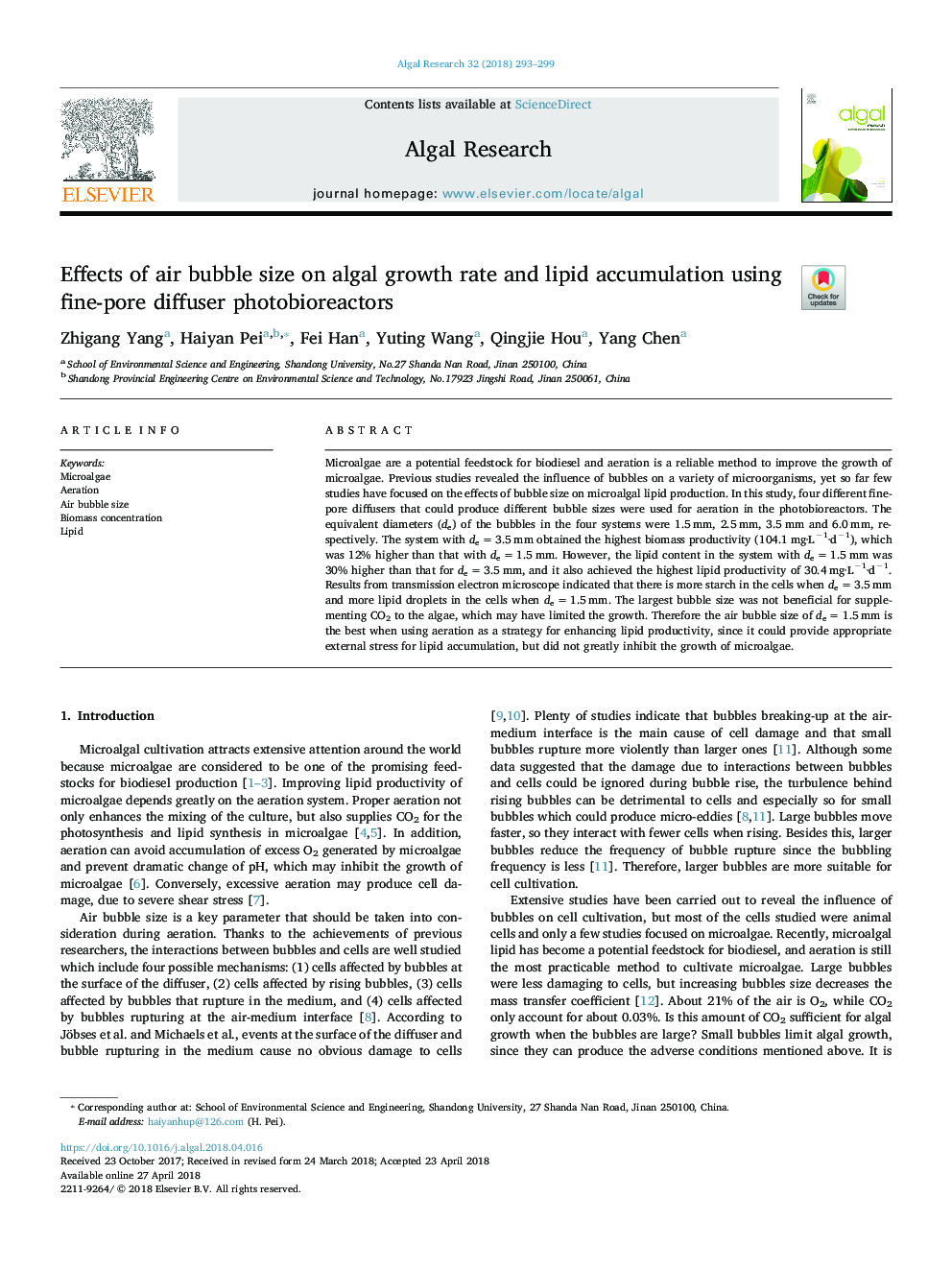| Article ID | Journal | Published Year | Pages | File Type |
|---|---|---|---|---|
| 8085811 | Algal Research | 2018 | 7 Pages |
Abstract
Microalgae are a potential feedstock for biodiesel and aeration is a reliable method to improve the growth of microalgae. Previous studies revealed the influence of bubbles on a variety of microorganisms, yet so far few studies have focused on the effects of bubble size on microalgal lipid production. In this study, four different fine-pore diffusers that could produce different bubble sizes were used for aeration in the photobioreactors. The equivalent diameters (de) of the bubbles in the four systems were 1.5â¯mm, 2.5â¯mm, 3.5â¯mm and 6.0â¯mm, respectively. The system with deâ¯=â¯3.5â¯mm obtained the highest biomass productivity (104.1â¯mg·Lâ1·dâ1), which was 12% higher than that with deâ¯=â¯1.5â¯mm. However, the lipid content in the system with deâ¯=â¯1.5â¯mm was 30% higher than that for deâ¯=â¯3.5â¯mm, and it also achieved the highest lipid productivity of 30.4â¯mg·Lâ1·dâ1. Results from transmission electron microscope indicated that there is more starch in the cells when deâ¯=â¯3.5â¯mm and more lipid droplets in the cells when deâ¯=â¯1.5â¯mm. The largest bubble size was not beneficial for supplementing CO2 to the algae, which may have limited the growth. Therefore the air bubble size of deâ¯=â¯1.5â¯mm is the best when using aeration as a strategy for enhancing lipid productivity, since it could provide appropriate external stress for lipid accumulation, but did not greatly inhibit the growth of microalgae.
Related Topics
Physical Sciences and Engineering
Energy
Renewable Energy, Sustainability and the Environment
Authors
Zhigang Yang, Haiyan Pei, Fei Han, Yuting Wang, Qingjie Hou, Yang Chen,
